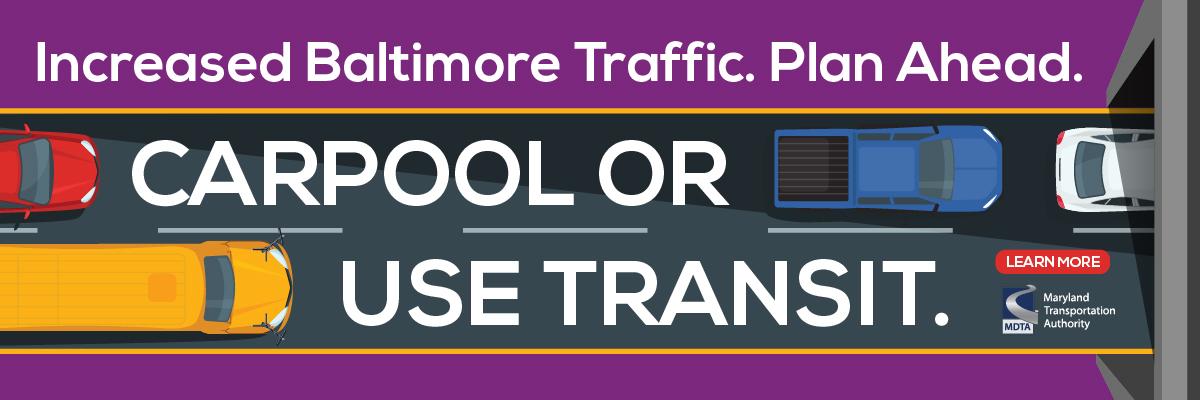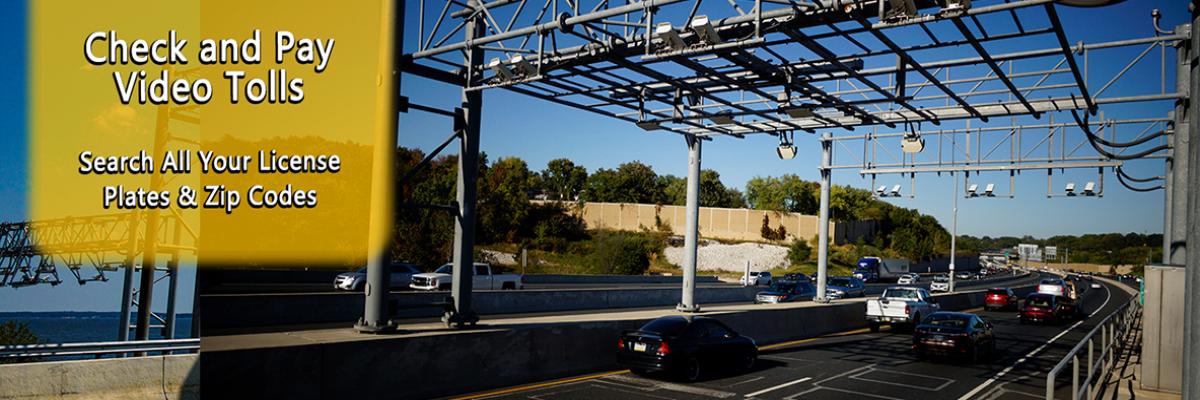The MDTA issues bonds supported by a pledge of toll revenues to finance portions of its capital program. The MDTA also issues conduit (non-recourse) debt for other transportation-related projects on behalf of the Maryland Department of Transportation (MDOT), which are not secured by a pledge of toll revenues.
The MDTA's toll-backed revenue bonds are known as Transportation Facilities Projects (TFP) Revenue Bonds. The MDTA is subject to a legislatively enacted debt limit of $4 billion for bonds secured by toll revenues as of June 30 of any year. Additionally, the MDTA is subject to Executive Order 01.01.1998.07 that requires annual notification of planned debt to the Maryland Department of Budget and Management.
All of the MDTA's toll-backed bonds are secured by a parity lien on system toll revenues under the master Trust Agreement. The Trust Agreement’s rate covenant requires that the MDTA fix, revise, charge and collect rentals, rates, fees, tolls and other charges and revenues for the use or services of the Transportation Facilities Projects in order to produce in each bond year Net Revenues in an amount not less than the sum of: (a) 120% of the Debt Service Requirement for outstanding bonds, and (b) 100% of the amount budgeted for deposits to the Maintenance and Operations (M&O) Reserve.
| Rate Covenant Calculation |
|---|
| (Operating Revenues - Operating Expenses) divided by (120% Debt Service Requirement + 100% budgeted for deposited to M&O) ≥ 1.0 |
Failure to achieve the rate covenant would require the trustee to legally compel the MDTA to adjust tolls and/or operating expenses to return to compliance. The MDTA’s rate covenant has shown strong coverage, with net operating revenues well above the 1.00 times minimum coverage level. See ACFR Debt Capacity Coverage table. Provide link to back to the ACFR page. https://mdta.maryland.gov/About/Finances/Financial_Statements_and_Annual_Reports.html
See Financial Forecast for prospective estimates.
As part of its Additional Bonds Test, prior to issuing any new debt, the MDTA must certify that the rate covenant has been met in the twelve consecutive months out of the proceeding eighteen-month period. In addition, the MDTA must certify on a prospective basis that the rate covenant will be met in the current bond year and in the fifth bond year following the completion date of a bond-financed additional project or project improvement. The MDTA's bond year is July 1 to June 30.
The Board’s long-standing debt service coverage policy is more stringent than the Trust Agreement Rate Covenant. The Debt Service Coverage minimum requires that projected Net Revenues exceed the Debt Service Requirement by at least two-times.
| Debt Service Coverage Calculation |
|---|
| (Operating Revenues - Operating Expenses) divided by (100% Debt Service Requirement) ≥ 2.0 |
Adherence to the minimum two-times debt service coverage supports goals to fund a portion of the capital program from net operating revenues and to maintain strong credit ratings, with access to the capital markets at the lowest possible financing rates. All three major rating agencies have consistently rated the MDTA's toll-backed debt in the double-A category. These favorable ratings reflect prudent management practices, diversified system revenue pledge, strong debt service coverage, and unrestricted cash reserves.
Rating Agency Reports:
- Rating Agency Reports 2025
- Fitch Rating Report September 2025 (PDF Download)
- Moody's Report May 2025 (PDF Download)
- S&P Report April 2025 (PDF Download)
- Rating Agency Report 2024
- Moody’s Outlook Change April 2024 (PDF Download)
- Moody’s Credit Opinion April 2024 (PDF Download)
- Rating Agency Report 2024
- Fitch Report March 2024 (PDF Download)
- S&P Report March 2024 (PDF Download)
- Moody’s Report March 2024 (PDF Download)
2008 to 2023 Archive
- Rating Agency Report 2023
- Fitch 2023 December Report (PDF Download)
- Rating Agency Report 2022
- Moody's 2022 April Report (PDF Download)
- Fitch 2022 April Report (PDF Download)
- Rating Agency Report 2021
- Moody's 2021 March Report (PDF Download)
- Fitch 2021 March Report (PDF Download)
- Rating Agency Report 2020
- Moody's 2020 June Report (PDF Download)
- Standard and Poor's 2020 June Report (PDF Download)
- Fitch 2020 April Report (PDF Download)
- Rating Agency Report 2019
- Fitch 2019 May Report (PDF Download)
- Standard and Poor's 2019 May Report Report (PDF Download)
- Rating Agency Report September 2018
- Standard and Poor's 2018 Report (PDF Download)
- Rating Agency Reports August 2018
- Fitch 2018 Report (PDF Download)
- Moody's 2018 Report (PDF Download)
- Rating Agency Reports June 2017
- Fitch 2017 Report (PDF Download)
- Moody's 2017 Report (PDF Download)
- Standard and Poor's 2017 Report (PDF Download)
- Rating Agency Report May 2017
- Moody's 2017 Report (PDF Download)
- Rating Agency Report December 2016
- Standard & Poor's 2016 Report (PDF Download)
- Rating Agency Report August 2016
- Fitch 2016 Report (PDF Download)
- Rating Agency Report September 2015
- Standard & Poor's 2015 Report (PDF Download)
- Rating Agency Reports April 2015 & May 2015
- Moody's 2015 Report (PDF Download)
- Fitch 2015 Report (PDF Download)
- Rating Agency Reports March 2014 & April 2014
- Standard & Poor's 2014 Report (PDF Download)
- Fitch 2014 Report (PDF Download)
- Rating Agency Reports October 2012 - January 2013
- Standard & Poor's 2013 Report (PDF Download)
- Moody's 2012 Report (PDF Download)
- Fitch 2012 Report (PDF Download)
- Rating Agency Reports February 2012
- Standard & Poor's Series 2012 Report (PDF Download)
- Moody's Series 2012 Report (PDF Download)
- Fitch Series 2012 Report (PDF Download)
- Rating Agency Reports July 2010
- Standard & Poor's Series 2010 Report (PDF Download)
- Moody's Series 2010 Report (PDF Download)
- Fitch Series 2010 Report (PDF Download)
- Rating Agency Reports November 2009
- Standard & Poor's Series 2009 Report (PDF Download)
- Moody's Series 2009 Report (PDF Download)
- Fitch Series 2009 Report (PDF Download)
- Rating Agency Reports February & March 2008
- Standard & Poor's Series 2008 Report (PDF Download)
- Moody's Series 2008 Report (PDF Download)
- Fitch Series 2008 Report (PDF Download)
Over time, credit factors that affect bond ratings can change due to market expectations and economic conditions. The MDTA posts credit rating changes through the Electronic Municipal Market Access System (EMMA), a public website maintained by the Municipal Securities Rulemaking Board. In accordance with the requirements of various Continuing Disclosure Agreements, the MDTA posts additional notices/information at http://emma.msrb.org/.
Non-recourse debt is backed by revenue from transportation projects that are not toll related. For example, the MDTA financed projects at BWI Thurgood Marshall Airport and parking garages in Annapolis and Prince George's County, Maryland by issuing bonds that are secured by revenues associated with those projects. See ACFR - Non-Recourse Debt Outstanding.
MDTA has also issued debt specifically for the Intercounty Connector (ICC) project that was backed by Maryland's federal highway aid; these bonds are known as Grant Anticipation Revenue Vehicles or GARVEE bonds.
The MDTA is a party to other individual Trust Agreements for each non-recourse debt issue.
- 2002 Trust Agreement - BWI Consolidated Rental Car Facility Bonds (PDF Download)
- 2003 Trust Agreement - BWI Variable Rate PFC Bonds (PDF Download)
- 2005 Trust Agreement - Calvert Street Parking Garage Bonds (PDF Download)
The MDTA's debt issuances that are not backed by toll revenues.






